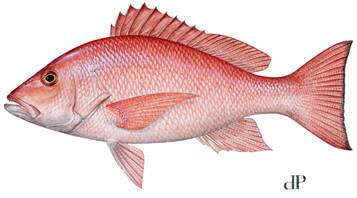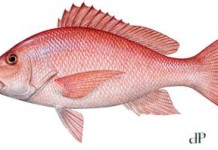Red snapper fishing has never been a more debated topic, but two things are certain for 2015: Gulf of Mexico sport anglers will get a 10-day season to pursue the tasty catch while charter captains will get more than four times that amount.
The recreational fishery beginning 9 nautical miles off the Texas coast, which again opens June 1, will be marked for the first time by “sector separation,” a regulation approved last month that defines how long recreational sector anglers and federal charter vessel/headboat (for-hire) anglers can catch snapper.
Last year’s Gulf red snapper season was shortened to just nine days for both private anglers and charter boats.
The commercial and recreational allocations (51 percent commercial and 49 percent recreational) annual catch limits are as follows: for 2015, the commercial quota is 7.293 million pounds and recreational 7.007 million pounds; for 2016, 7.12 million and 6.840 million pounds, respectively; and for 2017 and subsequent fishing years, 7.007 million and 6.733 million pounds, respectively.
The revised recreational annual catch targets in the final wording are 5.606 million pounds for 2015, 5.472 million pounds for 2016, and 5.384 million pounds for 2017. The annual catch target figures are reduced from each component’s quota by 20 percent and provide a buffer to overfishing, federal fisheries managers have said.
There had been much debate over Amendment 40 and action taken upon it by the Gulf of Mexico Fishery Management Council, with moves toward section separation and separate closure provisions for the recreational sectors. The purpose of Amendment 40, according to its documentation and wording “is to provide a basis for increased flexibility in future management of the recreational sector, and reduce the likelihood of recreational quota overruns, which could negatively impact the rebuilding of the red snapper stock.”
Fisheries leaders from Alabama, Florida, Louisiana, Mississippi and Texas announced in March their plan for the Gulf States Red Snapper Management Authority, a consensus that red snapper fishing in the Gulf of Mexico has no business being governed by the federal government and it’s time to move ahead on their own. State fisheries biologists and officials contend that snapper stocks are not in danger of being threatened, and are in fact thriving. However, documented catches exceeding the annual quota by federal fisheries managers led to the rule changes this year.
Highlighting just how contentious the fight over red snapper frameworks has become, the National Marine Fisheries Service received more than 18,000 comments on Amendment 40 and the proposed rule changes from various individuals, fishing groups, state agencies and legislators, with about 15,000 comments levied in support.
More than 95 percent of the red snapper landed in Texas come from federal waters, according to Texas Parks & Wildlife Department figures. Most of that catch – about 80 percent – comes from head boats, also known as “party boats,” which take out numerous paying clients offshore. These boats account for roughly 200,000 angler fishing trips annually, according to TPWD figures.
The recreational red snapper bag limit in federal waters is two fish at least 16 inches in length. The bag limit in Texas waters is four fish, at least 15 inches long, with a year-round season.
The final wording of the red snapper frameworks and other fisheries regulations have been officially posted in the Federal Register.




















